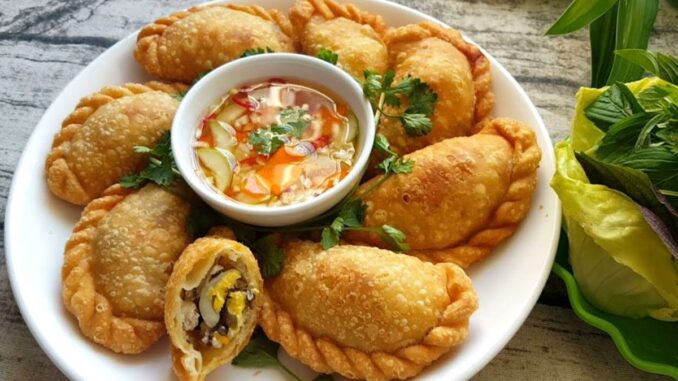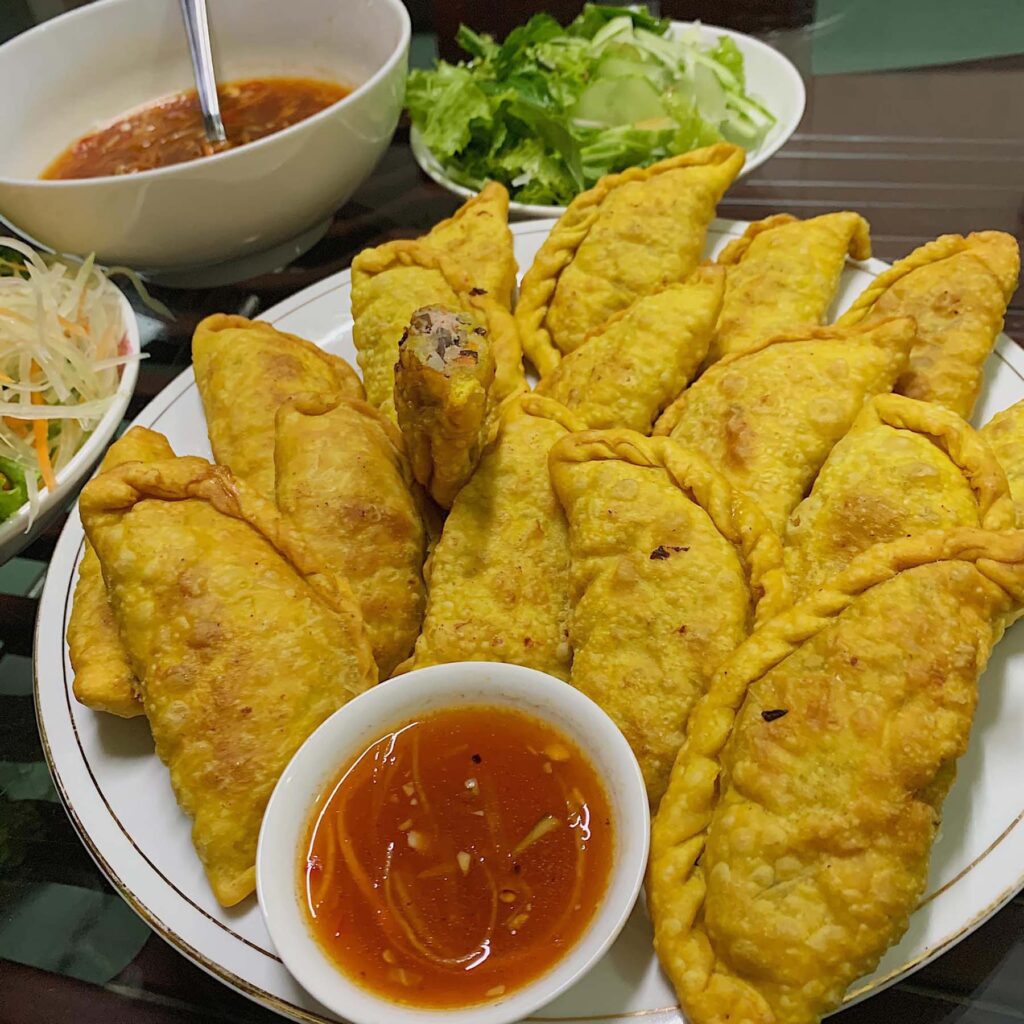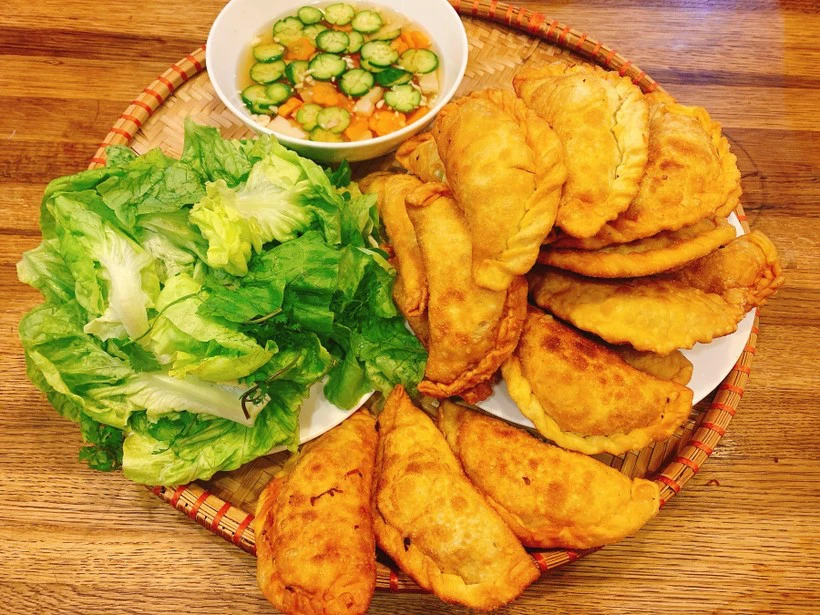
Emerging from the vibrant streets of Hanoi, Vietnam, lies a culinary gem that has captivated the hearts and taste buds of locals and visitors alike – Bánh Gối Hà Nội, or Hanoi pillow-shaped cake. These delectable morsels, a cornerstone of street food culture in the city, embody the essence of Hanoian cuisine and its resourceful culinary traditions.
Bánh gối is a Hanoi snack loved by many people. Attractive cake with a golden, crispy outer crust and delicious filling inside.
History
Bánh gối is a type of Vietnamese cake, in the Central region it is also called Bánh quai vạc and in the South, it is called Bánh xếp. According to writer Nguyen Ngoc Tien, with reliable research on Hanoi, bánh gối followed the Chinese people in Guangdong and was introduced to Hanoi before 1954, which means bánh gối appeared as a snack at the same time as dumplings, Bánh quẩy (fried dough stick), or Bánh chín tầng mây.
Specialties
Bánh gối is known as a specialty snack in Hanoi. The combination of crispy crust and delicious filling brings an indescribable appeal which is a culinary gem that embodies the essence of Hanoian cuisine. Their crispy golden crusts, delicious filling, and dipping sauce all come together to create a symphony of flavors and textures that have captivated the hearts and taste buds of locals and visitors alike.
The most important way to make Bánh gối is the crust. After being kneaded, the flour must be rolled so that it is even, thin, and flexible. Then put the prepared filling in the middle, fold the crust in half, and create a semicircle or rope-shaped border to make the cake look more eye-catching. Then fry the cake in a pan filled with oil until the crust turns golden and crispy.

Main ingredient

– Crispy golden crusts: The defining characteristic of Bánh gối is their irresistible crispy crusts. Made from a thin dough of wheat flour and water, the crusts are carefully fried to perfection, achieving a delicate balance between crispness and softness. The golden-brown color adds a visual appeal to the dish, while the satisfying crunch with each bite provides a delightful contrast to savor the filling.
– Filling: It includes wood ear mushrooms, ground pork belly, carrots, and glass noodles, combined with many spices such as pepper, green onions, soup powder…
– Dipping sauce: Bánh gối is typically served with a dipping sauce, adding another dimension of flavor and complexity to the dish. The dipping sauce is typically a combination of fish sauce, lime, sugar, garlic, added carrot, kohlrabi, and chili peppers, creating a balance of sweet, sour, salty, and spicy flavors. The sauce enhances the flavors of the dumplings, adding a refreshing touch that complements the savory filling.
Recommend some places to enjoy
- Bánh gối Hà Đông cô Mai: Bánh gối here is extremely special because it is not served with raw vegetables or sweet and sour dipping sauce as usual but instead is served with extremely spicy chili sauce.
Address: No. 91 Nguyen Van Troi Street, Ha Dong District, Hanoi
- Bánh gối Lý Quốc Sư: Bánh gối here is fried until golden brown, the crust is not too thick so that when you eat it, you can feel the crispy crust melting in your mouth.
Address: No. 52 Ly Quoc Su Street, Hoan Kiem District, Hanoi
- Bánh gối xá xíu Hà Nội: The filling is plump, and made from char siu meat, giving it a unique and unique flavor
Address: No. 101D3 Dang Van Ngu Street, Dong Da Street, Hanoi
If you are looking for a delicious and authentic Vietnamese dish, Bánh gối is a great option. It is a flavorful and satisfying dish that is sure to please everyone.
Get an opportunity to enjoy wonderful Vietnamese cuisine through Vietnam E-Visa!